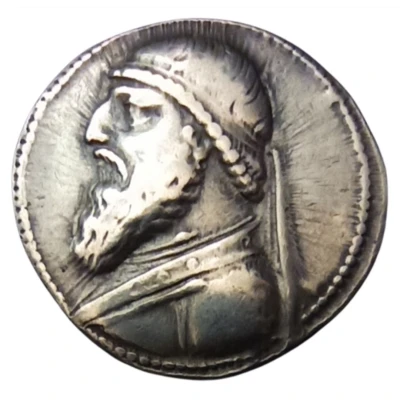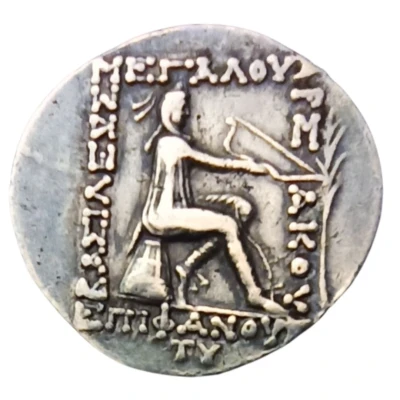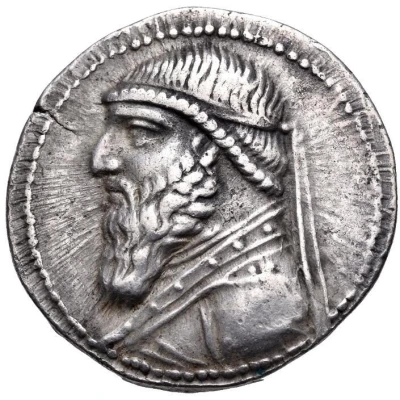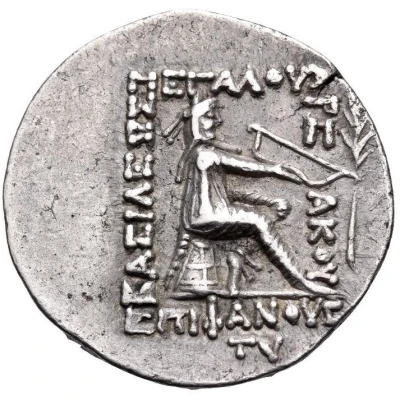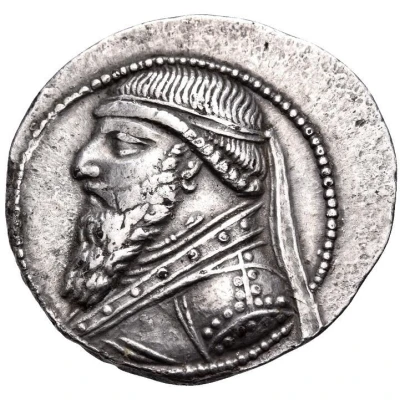
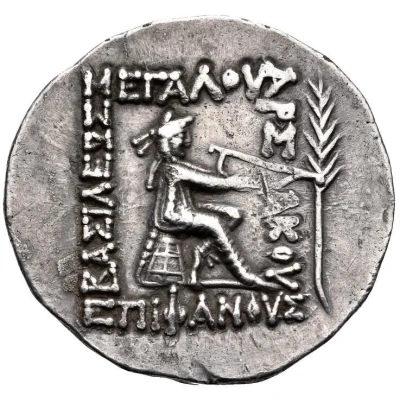

© Nomos AG
Tetradrachm - Mithridates II 120 BC - 109 BC
| Silver | 15.79 g | 32 mm |
| Issuer | Parthian Empire (Parthian Empire (247 BC - 224 AD)) |
|---|---|
| King | Mithridates II (123 BC - 88 BC) |
| Type | Standard circulation coin |
| Years | 120 BC - 109 BC |
| Value | Tetradrachm (4) |
| Currency | Drachm (247 BC-224 AD) |
| Composition | Silver |
| Weight | 15.79 g |
| Diameter | 32 mm |
| Shape | Round (irregular) |
| Technique | Hammered (Die Alignment: 1h) |
| Orientation | Variable alignment ↺ |
| Demonetized | Yes |
| Updated | 2024-10-10 |
| Numista | N#380185 |
|---|---|
| Rarity index | 100% |
Reverse
Archer (Arsakes I) seated right on omphalos, holding bow in his right hand; to outer right, palm branch.
Script: Greek
Lettering: BAΣIΛEΩΣ MEΓAΛOΥ AΡΣAKOΥ EΠIΦANOΥΣ
Edge
Plain
Interesting fact
One interesting fact about the Tetradrachm coin of Mithridates II from the Parthian Empire is that it features a unique blend of Greek and Persian influences in its design. The coin's obverse side depicts the king's portrait, while the reverse side shows a seated goddess, likely Artemis, with a crescent moon and a star above her head. This fusion of Greek and Persian elements reflects the cultural exchange and syncretism that occurred during the Hellenistic period, where Greek and Persian cultures interacted and influenced each other.
